Local Attractions
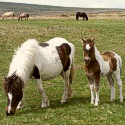 Dartmoor National Park
Dartmoor National Park
Dartmoor was designated one of the 12 National Parks of England and Wales in 1951. It is a beautiful moorland landscape with wooded valleys and wind swept tors. 368 square miles (953 sq. km.) in area, it is home to about 33,000 people. All the land is owned by someone, but there is legal public access to over 47,000 hectares of open country and 450 miles (730 km) of public rights of way, which provide miles of unspoilt spectacular scenery to enjoy, both on foot and horseback. Dartmoor is a rich habitat for wildlife and has a wealth of archaeological remains.
https://www.dartmoor-npa.gov.uk/ and https://www.dartmoor.co.uk/
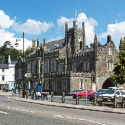 Tavistock
Tavistock
Straddling the fast flowing river Tavy below the western edge of Dartmoor, Tavistock stands in the heart of an area of tremendous natural beauty. It is a classic West Country Market Town, with a population of 11,000 and a shoppers delight. Whatever your fancy – old books, bold cooks, the art scene or smart jeans – there is enormous variety and choice.
Tavistock Tourist Information Centre: https://www.tavistockonline.co.uk/tourist_info.htm
Tavistock Town Council: https://www.tavistock.gov.uk
Tavistock Museum: https://www.tavistockmuseum.co.uk/
 Tavistock Goose Fair
Tavistock Goose Fair
The annual Goose Fair dates back to the early 12th century. The name Goose Fair probably came about as farmers brought their geese to market ready for fattening for Christmas. Nowadays the Fair is held on the second Wednesday in October each year. Market traders come from all over the country to sell their wares and provide entertainment. Stalls and side-shows are set up in the centre of the town, and some 200 spaces are let by the Town Council for traders and organisations. A further 70 spaces are let to members of the Showman’s Guild.https://www.tavistock.gov.uk/index.php?page=goose-fair
 Tavistock Pannier Market
Tavistock Pannier Market
A Royal Charter granted in 1105 by Henry I is still in operation and the Town Council are the current custodians. The Charter gives the sole right to operate markets within two leagues (6 2/3rd miles) of the Market site. The present market was purpose built in the 1850’s by the beneficence of the 7th Duke of Bedford, the then holder of the Charter. To erect the building it was necessary to re-route the river Tavy. Other buildings erected in the same programme were the Magistrates Court, Police Station, Town Hall and a run of shops along Duke Street and around the Market itself. Apart from electric lighting and heating today’s Pannier Market is little changed from the original build, and is possibly the finest example in the South West of a traditional Pannier Market offering themed days giving visitors the chance of experiencing a diversity of goods. Refreshments are available from a number of stalls and small shops around the Market.
https://www.tavistock.gov.uk/index.php?page=pannier-market
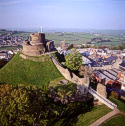 Launceston Castle
Launceston Castle
(English Heritage)
Just over the border into Cornwall lies the ancient former capital of Cornwall, Launceston, with its Castle is set on the high motte of a stronghold built soon after the Norman Conquest. It was famously used as a jail for George Fox during the reign of Charles II. As the venue for the county assizes and gaol, the castle witnessed the trials and hangings of numerous criminals. The last execution was in 1821. A hands-on display at the castle traces 1,000 years of history, with finds from site excavations.
https://www.english-heritage.org.uk/daysout/properties/launceston-castle/
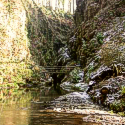 Lydford Gorge
Lydford Gorge
(National Trust – off the A386 north of Peter Tavy)
This famous gorge is 1.5 miles long and can be viewed from a circular walk, which starts high above the river and passes through attractive oak woods before dropping down to the dramatic 30m high White Lady waterfall. The path then proceeds along an enchanting riverside walk through the steeply sided ravine, scooped out by the River Lyd as it plunges into a series of whirlpools, including the thrilling Devil’s Cauldron. https://www.nationaltrust.org.uk/lydford-gorge/
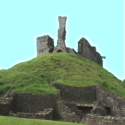 Okehampton Castle
Okehampton Castle
(English Heritage – 1 mile south west of Okehampton town centre)
The ruins of the largest castle in Devon, in a stunning setting on the foothills of Dartmoor. Only the shattered remains of the castle can be seen today. Laid waste by Henry VIII, the ruins include a gatehouse, Norman keep and the remains of the 14th century great hall, buttery and kitchens. It was the medieval home of the earls of Devon and there have been sightings of Lady Howard’s ghost. There is a riverside picnic area of exceptional beauty and some enchanting woodland walks nearby.
https://www.english-heritage.org.uk/daysout/properties/okehampton-castle/
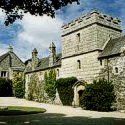 Cotehele House & Gardens
Cotehele House & Gardens
(National Trust; St Dominick, nr Saltash, Cornwall)
Medieval house with superb collections of textiles, armour and furniture, set in extensive grounds. At the heart of this riverside estate sits the granite and slatestone house of Cotehele, built mainly between 1485 and 1627 and a home of the Edgcumbe family for centuries. Intimate chambers feature large Tudor fireplaces and rich hangings. Outside, the formal gardens overlook the richly planted valley garden below, with medieval dovecote, stewpond and Victorian summer house, and 18th century tower above. At the Quay interesting old buildings house the Edgcumbe Arms tea-room and an outstation of the National Maritime Museum. The restored Tamar sailing barge ‘Shamrock’ is moored alongside. A network of paths throughout the estate provides a variety of riverside and woodland walks.
https://www.nationaltrust.org.uk/cotehele/
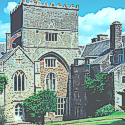 Buckland Abbey
Buckland Abbey
(National Trust; Yelverton)
700 year old building with fine 16th century great hall. Tucked away in its own secluded valley above the River Tavy, Buckland was originally a small Cistercian monastery. The house, incorporating remains of the 13th century abbey church, has rich associations with Sir Francis Drake and his seafaring rival, Sir Richard Grenville, containing much interesting memorabilia from their time. There are exhibitions on Buckland’s history as well as a magnificent monastic barn, herb garden, delightful estate walks and craft workshops. https://www.nationaltrust.org.uk/buckland-abbey/
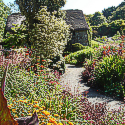 The Garden House
The Garden House
(Run by the Fortescue Garden Trust, a registered charity; Buckland Monachorum)
Possibly the best garden in England with its enchanting terraced walled garden with its 16th century tower and also the ‘magic circle’, quarry garden, wild flower meadow and more. Eight acres of colour and interest throughout the season, featuring ‘naturalistic planting’ within a beautiful South Devon landscape on the edge of Dartmoor National Park. Browse the well stocked plant centre and relax in the tea rooms.
https://www.thegardenhouse.org.uk/
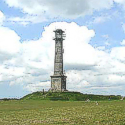 The Tamar Valley and Kit Hill Country Park
The Tamar Valley and Kit Hill Country Park
(Managed by Cornwall County Council; 3 miles west of Gunnislake)
Rising high above the beautiful Tamar Valley AONB (Area of Outstanding Natural Beauty), Kit Hill is a wild, rugged granite hilltop famous for its fine views and fascinating history, and a focal point for miles around. Climbing to just over 1000 feet above sea level (333m), it is the highest point of the Hingston Down ridge. At the summit, three viewing tables help you identify features in the surrounding countryside, including Dartmoor, Bodmin Moor, the Tamar Valley and Plymouth. On a clear day the Eddystone Light is visible.
https://www.tamarvalleytourism.co.uk/area/Things_to_Do/Places_to_Visit/Kit_Hill_Country_Park/
https://www.tamarvalley.org.uk/
 National Marine Aquarium
National Marine Aquarium
(Plymouth, follow the brown and white fish signs)
The National Marine Aquarium is a registered charity dedicated to raising awareness of the oceans.
The National Marine Aquarium is now Britain’s largest aquarium containing Europe’s deepest tank. Attractions include: The Atlantic Reef is the largest of the cold water exhibits in the aquarium and follows very closely the conditions in the seas around our coast; The new Mediterranean exhibit features the deepest tank in Europe. A dizzying 10.5 metres deep, the tank holds 2.5 million litres of warm seawater.
https://www.national-aquarium.co.uk/
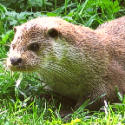 Tamar Otter Sanctuary
Tamar Otter Sanctuary
( Near Launceston, Cornwall)
The Otter Trust is the world’s leading Otter conservation organisation
The only place in the West Country breeding the British Otter regularly and reintroducing young otters into the wild to save the otter from extinction. Orphaned otter cubs rehabilitation centre, Dormouse conservation project to help conserve this attractive little animal, Visitor Centre, Picnic Areas, Illustrated Nature Trail, Refreshments, Gift Shop, Free Car Park, Two lakes with many Waterfowl.
https://www.chycor.co.uk/tourism/tamar_otter/tamar_otter.htm
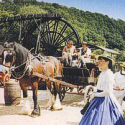 Morwellham Quay
Morwellham Quay
An award-winning, evocative museum and visitor centre based around the historic port and mine workings on the River Tamar.
Costumed staff welcome visitors to the restored port and help to transport you back to the bustling 1860s when heaps of gleaming copper ore filled the quays and a forest of ships’ masts lined the river. All human life is here as you explore the busy assay office, marvel at the over-crowded miner’s
cottages and stroll through the delightful, walled gardens.
For many, a highlight of the visit is the journey underground into the copper mine. Here son et lumière displays illustrate the harsh working conditions of Victorian miners and our train drivers offer an expert commentary on the technical aspects of hard rock mining. By way of contrast the Victorian farm and nature reserve offer you the chance to escape the hustle and bustle of 21st century life as you wander through the tranquil countryside with only the wildlife for company.
https://www.morwellham-quay.co.uk